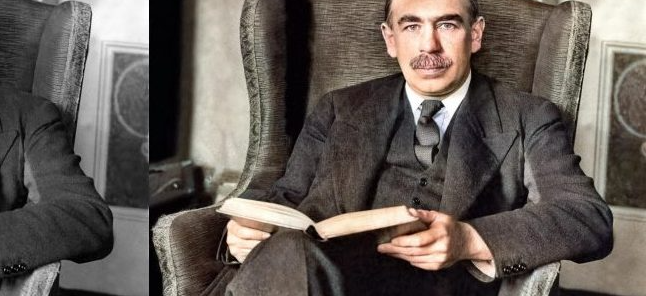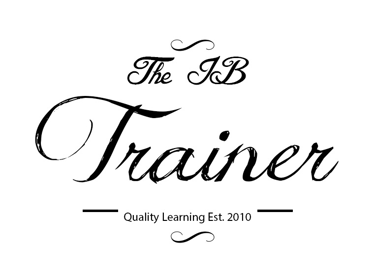Macroeconomic Equilibrium Monetarists vs Keynesians
Understand macroeconomic equilibrium with a fun take on Monetarist vs Keynesian models, inflation gaps, and how economies balance growth for IB Economics
IB ECONOMICS HLIB ECONOMICS MACROECONOMICSIB ECONOMICSIB ECONOMICS SL
Lawrence Robert
4/23/20253 min read


Macroeconomic Equilibrium: Monetarists vs Keynesians
Imagine you were at Glastonbury Festival music festival last summer. The crowd was buzzing (aggregate demand), the performers were ready (aggregate supply), and everything was flowing just right - that’s macroeconomic equilibrium. But what if too many people show up and the sound system can’t cope? Or worse, no one shows up and the headline act plays to a field of sheep? Let's go through the world of macroeconomic imbalance.
IB Economics What is Macroeconomic Equilibrium?
At its core, macroeconomic equilibrium happens when aggregate demand (AD) = aggregate supply (AS) - like two perfectly matched dance partners. This can occur in the short run or the long run, and how it happens depends on whether you follow the Monetarist or the Keynesian school of thought.
Internal Assessment (IA) Guide – Free Download
Step-by-step support on topic selection, structure, evaluation, and most common IB Economics IA mistakes.
Understanding key IB Economics Internal Assessment concepts
Applying and explaining them in real-world IB Economics contexts
Building IB Economics IA confidence without drowning in dry theory and explanations.
Download the IA guide now for free and boost your IB Economics grades and confidence:
Short-Run Macroeconomic Equilibrium: SRAS Meets AD
In the short run, equilibrium is reached when SRAS intersects AD. This determines:
The average price level (think: general ticket prices for the economy)
The real GDP / output (how many people actually show up to the gig)
Depending on the price elasticity of supply, changes in demand could cause:
A massive spike in prices (if AS is inelastic)
A big jump in output (if AS is elastic)
IB Economics The Monetarist View: The Economy Always Finds Its Way (Eventually)
Monetarists believe the economy is a bit like a GPS - it recalculates route and eventually brings you back to full employment, no matter what detour you take.
So what do they believe in?
The LRAS is vertical at full employment output (YF).
Wages and prices are flexible, so the economy self-corrects.
If there’s an inflationary gap (too much demand), the SRAS will shift left due to higher costs - bringing you back to YF.
No need for government intervention. Let the market do its thing.
IB Economics Real-life Example: Think Germany - often praised for long-term fiscal discipline and structural reform, sticking close to monetarist ideals.
IB Economics The Keynesian View: Sometimes You’ve Got to Step In
Keynesians see the economy more like a moody teenager. Left alone, it might spiral into a long sulk (a recession) and not bounce back on its own.
Here’s their take:
The AS curve has three zones: flat, sloped, and vertical.
In deep recessions (like the 2008 Global Financial Crisis or Japan in the '90s), the economy can get stuck in a deflationary gap.
Wages are sticky downwards - people don’t accept pay cuts easily, especially with strong unions or long-term contracts.
Government intervention is essential: fiscal and monetary policies are needed to nudge the economy out of trouble.
IB Economics Real-life Example: Think of how governments injected billions during COVID-19 just to keep economies alive.
IB Economics Inflationary & Deflationary Gaps: When Things Get Wobbly
An inflationary gap (YE > YF) = the economy’s overheating. Too much money chasing too few goods = rising prices. Hello, inflation.
A deflationary (or recessionary) gap (YE < YF) = economy underperforms. Output and employment fall. Hello, Netflix binges and CV updating.
Each economic model offers its own fix:
Monetarists: “Patience, young padawan. The market itself will fix it.”
Keynesians: “Intervene before this turns into a full-blown crisis.”
Why All this Is Relevant For Your IB Economics Course
Knowing the difference between these models can win you major points on Paper 3 and provide the economic street smarts to debate fiscal policy over dinner (or more realistically, argue about inflation with your mate who just bought some crypto to impress you).
For access to all IB Economics exam practice questions, model answers, IB Economics complete diagrams together with full explanations, and detailed assessment criteria, explore the Complete IB Economics Course:
IB Economics Real-Life Example Showdown
USA during the Great Depression: Keynesian policies under FDR’s New Deal helped boost government spending to pull the economy out of a slump.
Post-COVID EU response: massive stimulus packages used Keynesian logic to avoid economic collapse.
Brazil’s monetary tightening in 2023: Monetarist in tone, raising interest rates to tame inflation despite high unemployment risk.
Every episode of Pint-Sized links back to what matters most for your IB Economics course:
Understanding key IB Economics concepts
Applying them in real-world IB Economics contexts
Building IB Economics course confidence without drowning in dry theory.
Subscribe for free to exclusive episodes designed to boost your IB Economics grades and confidence:
IB Economics Key Takeaways
Monetarist Model: Self-correcting, vertical LRAS, flexible prices / wages, focus on long-term.
Keynesian Model: Economy can stay in recession, sticky wages, three-zoned AS curve, active gov intervention needed.
Both models agree that long-term growth depends on increasing productive capacity - but they strongly disagree on how to handle the bumps along the way.
Stay well,
IB Complete Support Courses, a new generation of affordable support materials directed at IB students seeking grades 6 or 7.
© Theibtrainer.com 2012-2025. All rights reserved.
